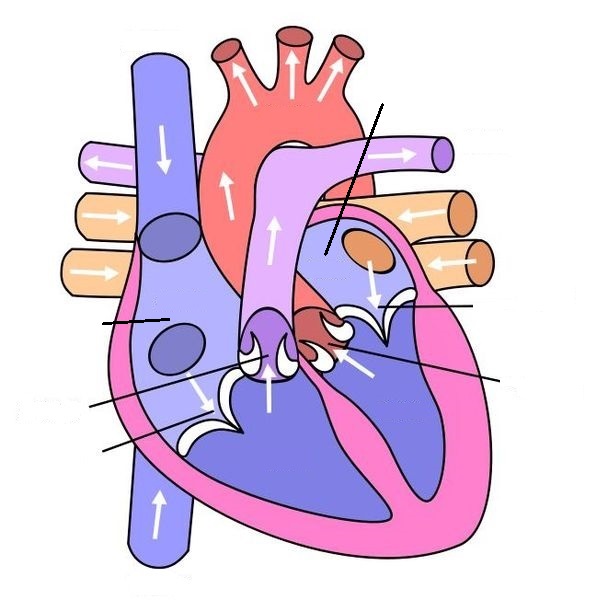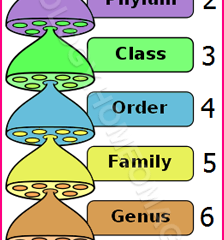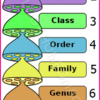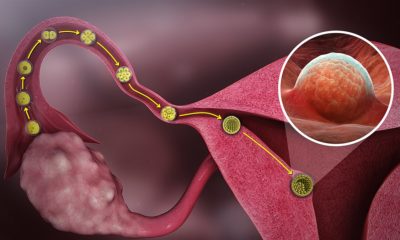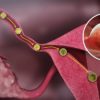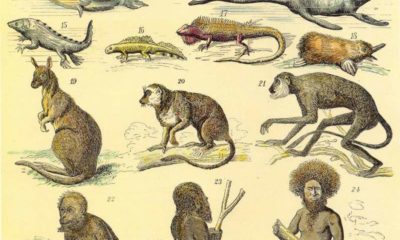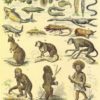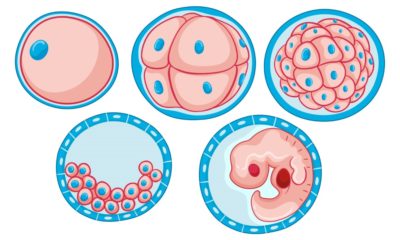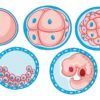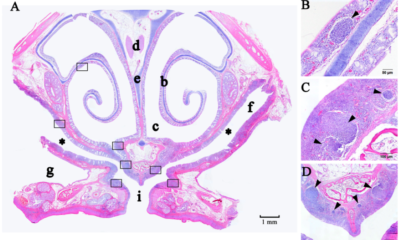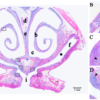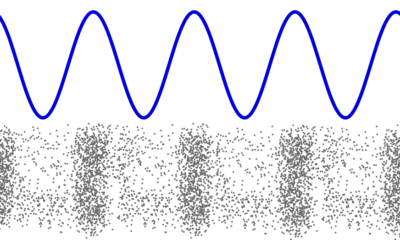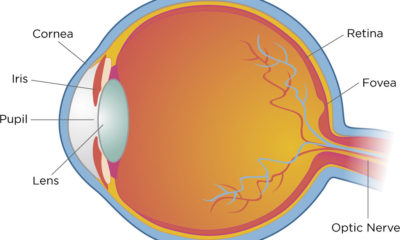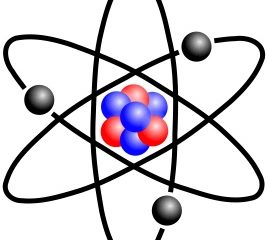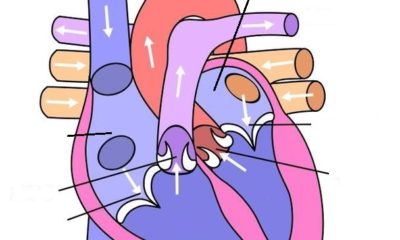Biology
LIFE PROCESS
What will happen to you if you are unable to breath or eat something? In this case you will not survive and ultimately you will end in death. It means you can not be alive without having food or nutrition.
The process which maintains the life of an individual is called Life process.
Nutrient : Nutrient is a substance which a living organism takes from its surroundings and uses it as an energy sources to do mechanical work, to grow and develop , to carry out life processes including working of internal organs and synthesizing protein and other substances needed in the body. Examples of nutrients are fats, carbohydrates, vitamins, proteins, minerals etc.
Nutrition : The process of intake as well as utilization of nutrients by an organism is called nutrition.
Autotrophic : The mode of nutrition in which organisms synthesis organic material (food) from inorganic raw materials like CO2, water and a few minerals, e.g. green plants and autotrophic bacteria. Green plants manufacture food in the form of carbohydrates by process of photosynthesis, Carbohydrates provide them energy. Unused carbohydrates is stored as starch and is used as energy source as and when required.
Heterotrophic : The mode of nutrition in which energy is derived from complex substances (food) taken in and digested i.e. broken down in to simpler molecules with the help of bio-catalysts called enzymes. The food is normally of plant or animal source.
Types of Heterotrophic Nutrition : Fungi like bread mould, yeast and mushrooms break down the food material outside their body/and then absorb it. Others take in the whole food and then break it down inside their bodies like amoeba, human beings and most of animals.
Saprophytic (or Saprotrophic) nutrition : – It refers to such kind of nutrition in which the organisms derive their nutrients from dead and decaying (rotten) organic matter( such as rotten leaves, rotten bread, dead animals, household wastes, non living organic matter present in the soil, etc.)
Examples :- Fungi (yeasts, mucor, mushroom, etc.) and Bacteria
Note :- The organisms having saprophytic nutrition are called saprophytes. Such nutrition in animals is called saprozoic nutrition. Both saprophytic and saprozoic nutrients together are called saprotrophic nutrition.
Parasitic nutrition:- The mode of nutrition in which organisms obtain nutrients from other organisms without killing them. A parasite lives inside the other organism or on its surface and doesn’t give any benefit in return. e.g. several fungi, bacteria, leech, tapeworm, orchids, lice, ticks etc. Cuscuta (amar-bel) is a plant parasite.
Holozoic nutrition – Such a nutrition in which the organisms take in food in the form of complex organic matter by ingestion is called holozoic nutrition. Holozoic nutrition involves ingestion (in taking of food), digestion( breakdown of the complex organic food materials into simple, smaller, soluble molecules) and assimilation(use of absorbed food molecules.)
Photosynthesis : A biochemical process in which plants manufacture food from CO2 and H2O with the help of chlorophyll and sunlight.
Photosynthesis takes place in chloroplasts which contain chlorophyll. These organelles are present in plant cells mainly in leaves just below the upper epidermis.
Water is absorbed from the soil by terrestrial plants with the help of root hair and then transported to leaves with the help of xylem tissue.
Carbon dioxide enters the leaves through stomata. Aquatic plants use CO2 dissolved in water. Stomata are tiny pores present on leaf surface through which most of the exchange of gases and evaporation of water vapours (transpiration) take place. However exchange of gases takes place even across the surface of stems, roots and leaves. During night when there is no photosynthesis, stomatal pores are closed to prevent loss of water. The opening and closing of pores is done by guard cells which surround the stomata. The guard cells swell when water flows into them causing stomatal pores to open. Similarly the pores close if the guard cells shrink.
The main events that take place during photosynthesis are :
(a) Chlorophyll molecule absorbs light energy (photons).
(b) Light energy is converted to chemical energy (ATP molecules) and water molecule split into hydrogen and oxygen in the presence of light.
(c) Carbon dioxide is reduced to carbohydrate C6H12O6
These steps need not take place one after the other immediately. For example desert plants take up carbon dioxide at night and prepare an intermediate which is acted upon by the energy absorbed by the chlorophyll during the day.
Other nutrients like nitrogen, phosphorous, iron and magnesium needed by the plants for building their body are taken from the soil by terrestrial plants. Nitrogen is taken up in
the form of inorganic nitrates or nitrites or as organic compounds prepared by nitrogen-fixing bacteria who convert atmospheric nitrogen. Nitrogen is essential for synthesis of protein and other compounds.
Nutrition in amoeba:– Amoeba takes in microscopic plants and animals by forming pseudopodia which is a finger- like extension of the cell surface. It encircles and fuses over the food and forms a food vacuole. In the food vacuole complex molecules of food are broken down into simpler substances which then diffuse into the cytoplasm which is utilised by the cell. The undigested food is moved to the cell surface and thrown out of the cell through any part.
In Paramoecium which is also a unicellular organism, the cell has a definite shapes and food is taken in at a definite spot. Food is moved to this spot by the movement of cilia which covers the entire surface of the cell.
Human Digestive System : Humans take in the whole food and break it down into simpler substances inside their body with the help of biological catalysts called enzymes.
Alimentary Canal (gut) : The length of alimentary canal is about 9 metres. It extends from mouth upto anus. Its main parts are : Buccal cavity , Oesophagus, Stomach, Duodenum, Ileum, Colon, Rectum.
Digestive Glands : Salivary glands, Liver, Pancreas
Steps of Nutrition : Food is taken into the buccal cavity which has a muscular tongue to help in ingestion and to taste the food. The teeth chew the food. Food is also wetted to make it soft.
Digestion :
(A) In mouth cavity : It receives secretion of salivary glands through their ducts. Their secretion is saliva which is alkaline and contains enzyme salivary amylase. It breaks down starch into maltose sugar.
Food then reaches the stomach through pharynx and a long muscular tube called oesophagus. The linings of entire gut including the oesophagus has muscles that contract rhythmically to push the food forward. This movement is called peristaltic movement.
(B) In Stomach :- The wall of stomach has gastric glands which secrete gastric juice. It contains hydrochloric acid, pepsin and mucus. Pepsin breaks down proteins in the acidic medium of hydrochloric acid. The acid also kills any Infectious agent present in the food. Mucus protects the inner linings of the stomach from acid.
The food exits stomach through a sphincter muscle which releases it in small amounts into the intestine. The intestine is a coiled tube and is the longest part of alimentary canal. Herbivores which eat grass have a longer intestine to enable cellulose to be digested, Meat is easier to digest, hence carnivores like tigers have a shorter small intestine.
(C) In small intestine : It receives the secretions of liver and pancreas through a common duct. Their functions are:
(a)Liver: Secretes bile juice which is stored in gall bladder. Bile emulsifies fats in the food i.e. breaks down fat molecules into smaller globules so that they can be easily acted upon by pancreatic juices. As the food coming from the stomach is acidic. It has to make alkaline for pancreatic enzymes to act on it. This is also done by bile juice.
(b)Pancreas : It secretes pancreatic juice which has trypsin to digest proteins and lipase to break down emulsified fat.
Intestinal walls also contain glands which secrete intestinal juice containing enzymes which complete the digestion i.e.
(a) Proteins changed into amino acids.
(b) Fats changed into fatty acids and glycerol.
(c) Carbohydrates changed into glucose.
The walls of the intestine have numerous finger like projections called vi11i. They are richly supplied with blood capillaries and also increase the surface area for absorption of digested food. The digested food molecules are absorbed in the blood stream here. Through blood they reach each and every cell. In the repairing damaged cells and tissues and for obtaining energy. Some of the energy is stored in our body in the form of glycogen.
Undigested food moves to the rectum where more vi11i absorb water from the food. The remaining matter is given out through anus. This exit of waste material is regulated by the anal sphincter.
Respiration is a complex process. It includes breathing as well as a biochemical process in which breakdown of absorbed food (glucose) takes place in cells to release energy. In some organisms this process involves use of oxygen (aerobic respiration) whereas in others oxygen is not used (anaerobic respiration). In all cases the first step is the break-down of glucose (a six-carbon molecule into a three-carbon molecule called pyruvate. This process takes place in cytoplasm. The next step depends on the type of respiration.
Aerobic respiration : In this oxidation of food takes place in presence of oxygen. Food (glucose) is completely broken down into carbon dioxide and water. Lot of energy is released which is used to synthesise ATP molecules.
Anaerobic respiration : This type of respiration occurs in certain bacteria and yeast which release energy from food in absence of oxygen. It also occurs in our muscles during vigorous muscular activity when oxygen gets used up faster than it is available to muscle cells. The build-up of lactic acid in our muscles during sudden activity causes cramps.
In anaerobic respiration the end product formed is ethyl alcohol (2 carbon molecule) in plants and lactic acid (3 carbon molecule) in animals. In this type of respiration less energy is release which stored as ATP molecules.
ATP molecules break down to release energy which is used for all endothermic cellular reactions, and for all other energy needs of the organism.
In yeast :
In Muscles :
Aerobic Respiration Anaerobic Respiration
- Takes place in presence of oxygen. 1. Takes place in absence of oxygen.
- End products are CO2 and H2O. 2. End products are ethyl alcohol in plants and lactic acid in animals.
- Considerable energy is released. 3. Much less energy is released.
- Complete breakdown of food occurs. 4. Partial breakdown of food occurs.
In a unicellular organism the entire surface of the organism is in direct contact with the environment. Therefore its needs of nutrition, respiration, and excretion are met by simple diffusion.
In plants the leaf cells exchange gases (oxygen and carbon dioxide) by diffusion through stomata, the tiny pores found on the surface of leaf. Large intercellular spaces ensure that all cells are in contact with air. During night there is no photosynthesis, and only CO2 is released in respiration. During day the CO2 released in respiration is used up in photosynthesis and release of oxygen is the major event.
Aquatic animals like fish, prawns etc, take in water through mouth and force it past their gills which can draw in oxygen dissolved in water and release carbon dioxide from the body. As the amount of oxygen dissolved in water is much less than that in atmosphere, a fish has to breathe much faster than terrestrial organisms.
Different terrestrial organisms take in oxygen from atmosphere through different organs. They take up oxygen through these organs which reaches the cells directly or through blood. Carbon dioxide released by the cells is similarly released to environment directly or through blood. Carbon dioxide release by the cells is similarly release to environment directly or through blood. All respiratory organs have a large surface area in contact with atmosphere to get enough oxygen. This surface is usually placed inside the body for protection and has very fine and delicate walls for easy diffusion of respiratory gases.
Respiration in Human Beings : Air is drawn through external nostrils into nasal cavities where air is warmed, moistened and filtered by fine hairs and mucus. Air then enters pharynx which lead into trachea (wind-pipe) which is supported by rings of cartilage so that it does not collapse even when there is no air in it.
Trachea divides into two bronchi which lead into the lungs. The lungs lie in thoracic cavity which is separated from abdominal cavity by a muscular partition called diaphragm. In lungs bronchi branch into many bronchiole each of which ends in a balloon- like sac called alveolus or alveolar sac. Walls of alveoli are very thin for easy exchange of gases and are covered by blood capillaries.
Larynx – The Voice Box : It is an enlarged part of trachea containing two vocal chords which vibrate to produce sound.
Mechanism of breathing : When we lift our ribs and flatten our diaphragm, the chest cavity expands and the air rushes into the alveolar sacs through nostrils, trachea and bronchi. As alveoli are covered by blood capillaries, exchange of gases take place through the thin walls of alveoli and blood capillaries. Oxygen diffuses into the alveolar blood vessels and is carried to all the body cells. Carbon dioxide released by the cells is carried by blood to alveoli. It diffuses into alveoli, and is expelled through trachea and nostrils. This happens when diaphragm and ribs relax and chest cavity comes back to its original size. During the breathing cycle, when the air is taken in and let out, the lungs always contain a residual volume of air so that there is sufficient time for oxygen to be absorbed and for the carbon dioxide to be released.
A respiratory pigment haemoglobin present in red blood cells carry the oxygen as. It has high affinity for oxygen. Carbon dioxide , which is more soluble in water, as compared to oxygen, mostly travels in a dissolved form in plasma.
Transportation: is a life process in which a substance absorbed or synthesized in one part is moved to other parts of the body. Transportation is essential as every cell needs oxygen, water and food etc, in order to survive. It is also essential for removal of waste material form the body.
Transportation in human beings: The organ system of animals responsible of transportation is called the circulatory system . In human beings the transportation of various materials to each and every cell is done through the flow of blood and lymph.
Blood Vessels : blood flows through three types of blood vessels :
(a) arteries (b) veins (c) capillaries
Arteries Veins Capillaries
- They have thick and They have thin walls They have very very thin (one
elastic walls. cell thick) walls and are
extremely narrow.
- They carry blood from They carry blood from They occur at the terminals
heart to different different body parts of arteries and veins.
body parts. to heart.
- They do not have They have valves valves
- Except for pulmonary Except for pulmonary Exchange of food materials
artery, arteries carry vein, veins carry gases and waste takes place
oxygenated blood deoxygenated blood through capillaries.
- Blood flows with high Blood flows with low
speed and pressure. speed and pressure.
Functions of Blood: Circulation of blood transports the following materials from one part of the body to another :
(a) nutrients (b) respiratory gases (oxygen and carbon dioxide)
(c) waste products (d) hormones and enzymes (e) ions
Blood also regulates temperature of the body and protects the body from attack of foreign bodies and disease causing pathogens.
Blood : Blood is a fluid connective tissue consisting of :
(a) fluid matrix Plasma in which three kinds of cell are floating, namely,
(b) Red blood corpuscles (c) White blood corpuscles (d) Blood Platelets
Blood Platelets : If any blood vessel is ruptured, the blood starts flowing out. Platelets are the cells which help in forming blood clot at the place of injury and plug the leak to stop the flow of blood.
Blood Circulatory System: It has four chambers of Heart, the muscular organ which pumps and receives blood and the blood vessels. It is as big as our fist.
The Human Heart: It has four chambers. Two upper chambers are called left and right Atria (singular atrium). They receive blood from large.
veins. The two lower chambers are the left and right Ventricles. They transport blood to lungs and the entire body. These chambers are separated by partitions called septum.
Between left atrium and left ventricle, and also between right atrium and right ventricle are present valves, which permit the flow of blood from atrium to ventricle and not in the reverse order.
Heart is made of special muscle cells called cardiac muscle fibres. Heart beat is due to rhythmic contraction and relaxation of heart muscles.
When muscles of all the four chambers of the heart are relaxed, deoxygenated blood brought from various organs of the body by the large veins, called vena cave, pour into right atrium. Simultaneously oxygenated blood from lungs pour into left atrium.
Next, when atria contract, right atrium pours deoxygenated blood into right ventricles and left atrium pours oxygenated blood into left ventricle.
Next, when ventricles contract, oxygenated blood from left ventricle is pumped into Aorta, the largest artery which distributes blood in all parts of the body through a network of arteries and capillaries. Simultaneously deoxygenated blood from right ventricle is pumped to the lungs through pulmonary artery, where it is oxygenated.
Since the blood flows twice through the heart in each cycle, it is called double circulation.
As the ventricles have to pump blood into various organs they have thicker muscular walls than those of atria.
Warm-blooded animals like mammals and birds constantly need more energy to maintain their body temperature than cold-blooded animals which have the same body temperature as that of the environment, Thus in mammals and birds the heart has four chambers to keep oxygenated blood apart from deoxygenated blood to ensure a highly efficient supply of oxygen to the body, whereas in amphibians and some reptiles the heart has only three chambers which allows some mixing of oxygenated and deoxygenated blood. In fishes there are only two chambers in the heart. Blood is pumped to the gills, gets oxygenated there and passes directly to the body parts. Thus in fishes the blood passes only once through the heart in one cycle unlike in humans.
LYMPHATIC SYSTEM : Like blood Lymph or tissue fluid is also a circulatory fluid that flows through lymphatic capillaries which join to form large lymph vessels. Lymph is like plasma but is colourless and contains less proteins.
Through the pores in the walls of the blood capillaries some amount of plasma, proteins and blood cells escape into intercellular spaces in the tissue to form lymph. It then travels through lymphatic capillaries and vessels back to heart through large veins. Lymph carries lymphocytes cells which destroy pathogens and foreign particles.
Transportation in plants : Plants absorb water and minerals like phosphorus, nitrogen etc, from the soil through their roots. Chlorophyll containing leaves synthesise glucose.
In case of very small plants diffusion carries water, minerals and food to all parts of the plant. In case of large plants a proper transport system is necessary.
Transportation of water and minerals is done through Tracheids and Vessels which are two kinds of elements of the plant conducting tissue Xylem. Vessels and tracheids of the roots, stems and leaves are interconnected to form a continuous system of water conducting channels reaching all parts of the plant. Water rises up in a plant by (i) root pressure (ii) transpiration pull.
At the roots, cells in contact with the soil actively take up ions. This creates a difference in the concentration of these ions between the root and the soil. Water, therefore moves into the root from the soil to eliminate this difference. This means that there is a steady movement of water into root xylem creating a column of water that is steadily pushed upwards.
Transpiration: The loss of water in the form of vapours from the aerial parts of the plant into atmosphere is called transpiration. This evaporation creates a suction called
transpiration pull which pulls water along with minerals dissolved in it from xylem cells of roots thus helping in upward movement of sap (ascent of sap). It also helps in temperature regulation.
During the night when stomata is closed, water rises mainly by root pressure, but but during the day transpiration pull is the major driving force.
Transportation of food and other substances: Glucose prepared mainly in leaves through photosynthesis, amino acids and hormones etc, are transported to all parts of the plant through Sieve Tubes with the help of adjacent companion cells, both of which are living cells of the plant conducting tissue phloem. Food is transported in a dilute aqueous solution. Transport of food from leaves to other parts of the plant is called Translocation. Translocation is necessary as every part of the plant needs food for energy and for building and maintaining the organism. Unlike transport of water through xylem, plants have to use their energy for the process of translocation.
EXCRETION: The biological process involved in removal of excess or toxic wastes produced in the body during metabolism is called excretion.
Many unicellular organisms remove these wasted by simple diffusion from the body surface into the surrounding water.
Excretion in Human Beings: Human excretory system consists of two bean shaped kidneys located in the abdomen, one on either side of the backbone. Two excretory tubes or ureters, one from each kidney opens into a urinary bladder. The urine collected in the urinary bladder passes into a muscular tube called urethra from which it is thrown out through an opening at its end called urinary opening.
Each kidney contains about a million excretory units called nephrons, which are made up of microscopic thin tubules with a cup shaped upper end called Bowman’s capsule
Containing arise from the renal artery which brings excess water and waste material from the body to kidney.
Blood is filtered from the blood capillaries into Bowman’s capsule. As this filtrate passes through tubules, useful substances like glucose, amino acids, salts and water etc, are selectively reabsorbed by blood capillaries which surround the nephron. The amount of water reabsorbed depends on how much excess water is present in the body and how much of dissolved waste is to be excreted. The nephrons drain the waste (urine) into a space inside kidney leading to ureter, from where it passes into the urinary bladder and is stored there until thrown out of the body. Human urine contains water and nitrogenous substances most of which is urea.
The pressure of expanded urinary bladder leads to an urge to pass out the urine. However, this urge can be controlled, as the urinary bladder is muscular and under nervous control.
Lungs which excrete respiratory waste products like CO2 are also organs of excretion in human beings.
DIALYSIS : Kidneys may get damaged due to infection or injury or restricted flow of blood. In order to remove metabolic wastes from blood and to maintain water level and mineral ions in body fluids an artificial kidney is employed. This procedure is called
Dialysis .
In this process blood is made to flow into a dialysis machine having long cellulose tubes made of selectively permeable membrane. These tubes are coiled in a tank having a dialysing solution which has the same osmotic pressure as blood. Waste substances from blood diffuse out of the blood into the tank and the cleaned blood is pumped into the patient.
Excretion in plants:
Oxygen is a waste product in the plants generated during photosynthesis. It is excreted through stomata.
Plants get rid of excess water by transpiration.
Many plant waste products are stored in cellular vacuoles. Some waste products are stored in leaves which fall off.
Some waste products like gums and raisins are stored in old xylem.
Plants also excrete some waste substances into the soil around them.


